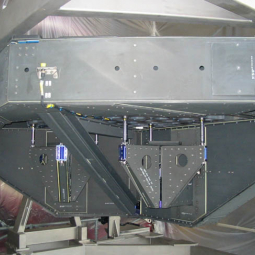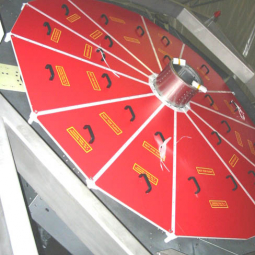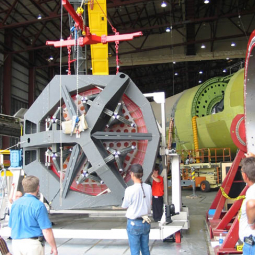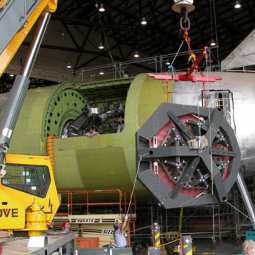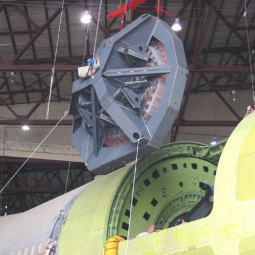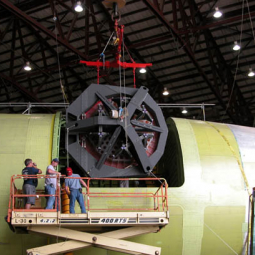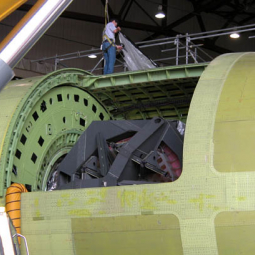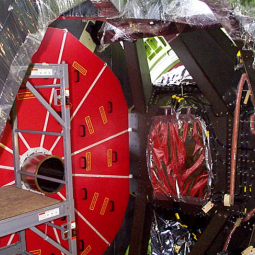All major components of the telescope, excepting the secondary and tertiary mirrors, have now been installed in the SOFIA aircraft. In addition, all control and support equipment is now in place and has been shown to function correctly. A major milestone was reached in November when the 1.2 meter spherical hydrostatic bearing was successfully used to float the ten-ton SOFIA telescope on 50 atmospheres of oil pressure. At that point the telescope could be moved easily by one person. The telescope servo control system was closed around the electronic fiber optic gyros in early December. All three tracker cameras were successfully operated in mid December. By placing fixed laser spots on the ceiling of the hangar, the SOFIA team was able to image the spots in the 6 degree wide field camera. Although these spots were slightly out of focus, the team was able to demonstrate inertial tracking of the telescope with the correct direction and rate. Within the next few months, the following additional checks will be made:
- Non-inertial tracking using the fixed laser spots
- Tests of the secondary alignment, focus and chopping mechanism
- Alignments of the all telescope optics
- End to end star test with the CCD camera HIPO

